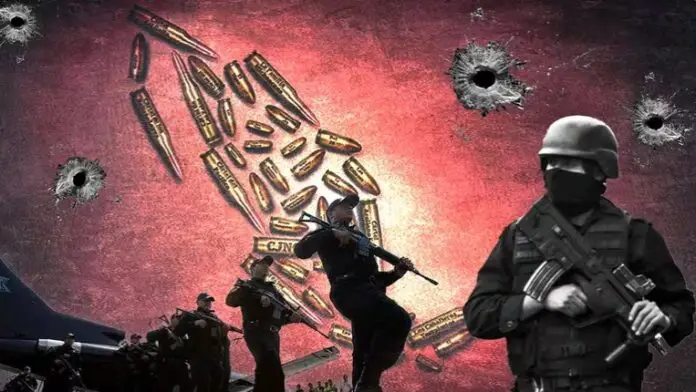A decade-long power struggle between Mexico’s most notorious cartels has led to a significant shift in dominance, with the Jalisco New Generation Cartel (CJNG) surpassing the once-invincible Sinaloa Cartel. According to journalist Jesús Lemus, four key factors have contributed to this dramatic change.
Firstly, the capture of Joaquín “El Chapo” Guzmán in 2016 and his subsequent extradition to the United States marked a significant turning point for the Sinaloa Cartel. El Chapo’s withdrawal from the cartel led to the emergence of rival factions, including Los Chapitos, led by Iván Archivaldo and Jesús Alfredo Guzmán Salazar, and Los Guanos, led by Aureliano Guzmán Loera.
The kidnapping of Los Chapitos in 2016, allegedly orchestrated by the CJNG and dissident members of the Sinaloa Cartel, further fragmented the organization. The subsequent war between Los Chapitos and Los Rusos, who were employed by La Mayiza, highlighted the internal struggles within the Sinaloa Cartel.
The departure of Rafael Caro Quintero from the Sinaloa Cartel marked the end of the triumvirate that had maintained its position as the world’s most powerful cartel. “Rafael Caro Quintero retired with his actions, and the Sonora (Caborca) Cartel was born,” Lemus explains.
The Caborca Cartel has since become a prominent faction within the Sinaloa Cartel umbrella model, with narco-banners signed by the cartel appearing in 2020. The messages warned Los Chapitos and other factions allied with the Sinaloa Cartel that the “narco of narcos” was coming for their territories.
A third factor contributing to the CJNG’s rise is the financial disparity between the two cartels. Mayo Zambada, a key figure in the Sinaloa Cartel, has struggled to maintain liquidity compared to Nemesio El Mencho Oseguera Cervantes and Los Cuinis, who have formed a powerful partnership. “The Mayo Zambada Cartel is no longer as powerful; it has no heirs, no real partners,” Lemus states.
In contrast, the CJNG has access to Los Cuinis, a cartel that has become the world’s most significant money laundering structure. The group, led by El Mencho’s brother-in-law Abigael González Valencia, laundered money not only for the CJNG but also for other cartels, including the Sinaloa Cartel.
Lastly, the Sinaloa Cartel’s internal conflicts have weakened its position. “It no longer exists; it practically disappeared with El Mayo Zambada,” Lemus notes. Official reports suggest that the CJNG has a presence in 28 states, while the Sinaloa Cartel operates in only 18.
Journalists specializing in drug trafficking agree with Lemus’s analysis, suggesting that Los Chapitos and La Mayiza may eventually establish themselves as independent cartels. The CJNG’s dominance is now considered unstoppable, marking a significant shift in the balance of power within Mexico’s criminal underworld.
Source: Infobae




